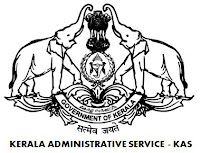Are you an aspiring candidate eagerly preparing for the highly competitive Kerala Administrative Service (KAS) Mains Examination 2025? With the KAS Mains exams confirmed for October 17th and 18th, 2025, the time for strategic and effective preparation is now. To empower your journey towards a coveted position in the Kerala State Government, we present an invaluable resource: our comprehensive set of KAS Mains Model Questions accompanied by a Detailed Answer Key. This meticulously crafted guide is designed to simulate the actual KAS exam pattern and challenge you with questions aligned precisely with the latest KAS Mains syllabus. Whether you're aiming to refine your descriptive writing skills, enhance your general studies knowledge, or simply gauge your readiness, our model questions with detailed solutions will provide the essential practice and insights needed to crack the KAS Mains 2025 and achieve your dream of serving in the Kerala Administrative Service
KAS Mains Model Question - Topic Kerala Economy
Question: ‘Kerala economy has rested in a bit of a gamble. Keralites would bear the brunt of the change in those societies & economies and the people of Kerala would be flocking back to an economy that is unable to absorb them’. Contemplate this statement by Dr. Shashi Tharoor (5 Marks)
Answer:
Introduction:
Dr. Shashi Tharoor’s remark is a critical reflection on Kerala’s overdependence on remittance-driven growth, warning of the potential socio-economic disruption if external conditions force Non-Resident Keralites (NRKs) to return en masse. This model of development, while ensuring high social indicators, rests on fragile external economies, making it a "gamble" that could unravel under global shocks.
The “Gamble” of Kerala’s Economic Model:
1. Remittance-Driven Development
-
Kerala’s economy has long been supported by remittances, especially from Gulf Cooperation Council (GCC) countries.
-
According to the Kerala Migration Survey (KMS) 2023, remittances touched ₹2.16 lakh crore, accounting for over 19% of India’s total inward remittances, up from 10.2% in 2021.
-
This has led to increased household consumption, real estate growth, and human development—but limited structural economic transformation.
2. External Vulnerabilities
Kerala’s economy is exposed to changes outside its control:
-
Economic Slowdowns in Gulf oil economies.
-
COVID-19 lockdowns and associated job losses.
-
“Nationalisation” Policies like:
-
Nitaqat and Saudization (Saudi Arabia),
-
Oman’s local hiring mandates,
-
Stricter H-1B visa rules in the USA,
-
Anti-immigrant sentiments in Europe.
-
-
Geopolitical Instability in West Asia (Yemen conflict, Iran tensions, etc.).
-
Racial and cultural backlash in parts of the Western world.
The Fallout: Return Migration and Systemic Pressure
1. Rise in Return Migration
-
As per KMS 2023, 1.8 million Keralites have returned, up from 1.2 million in 2018.
-
Major causes: employment loss, visa issues, Gulfisation, and stagnant construction sectors abroad.
2. Burden on Domestic Economy
The influx of returnees presents multiple challenges:
-
Loss of Remittances: Directly impacts consumption and family income.
-
Unemployment Surge: Kerala’s unemployment rate is one of the highest in India.
-
Skill Mismatch: Returnees often possess skills that don’t align with local job markets.
-
Underdeveloped Industrial Base: Lack of scalable manufacturing and industrial employment.
-
Limited absorptive capacity in agriculture, services, and infrastructure.
Kerala’s Structural Weaknesses:
-
High consumption, low production economy.
-
Poor industrialisation and private investment.
-
Overdependence on service sector jobs.
-
Infrastructure bottlenecks and land acquisition hurdles.
-
Delayed implementation of structural economic reforms.
Way Forward: Building a Resilient Kerala Economy
1. Rehabilitating Returnees
-
NORKA Roots: Schemes like Swanthana, Dream Kerala, business facilitation centres.
-
Focus on reintegration via upskilling and micro-entrepreneurship.
2. Economic Diversification
-
Shift focus from remittances to production and innovation.
-
Boost manufacturing, agriculture value chains, renewable energy, fisheries, and handloom/coir industries.
-
Support labour-intensive traditional industries through credit, export promotion, and marketing.
3. Knowledge-Based Economy
-
Strengthen K-DISC, Kerala Knowledge Economy Mission, and Startup Mission.
-
Attract R&D through innovation zones akin to Silicon Valley or Research Triangle, USA.
-
Enable high-tech industries and frugal innovations aimed at inclusive development.
4. Skill Development
-
Bridge the skill gap through demand-oriented training.
-
Collaborate with private sector for vocational and professional education.
5. Entrepreneurship & MSME Promotion
-
Encourage self-employment and micro-enterprises.
-
Provide incubation support and easy credit via state-backed financial institutions.
6. Diaspora as a Development Partner
-
Move beyond remittances to harness diaspora expertise, investments, and networks.
-
Establish structured channels for diaspora-led investment in startups, education, tourism, and healthcare.
Conclusion:
Dr. Tharoor’s statement is both a cautionary note and a call for transformation. Kerala’s development model has yielded social gains, but the economic foundations remain vulnerable. As the global migration landscape changes, Kerala must pivot toward self-reliant, employment-generating, and resilient economic strategies. A forward-looking, inclusive economic roadmap—grounded in diversification, innovation, and diaspora engagement—will turn this gamble into a sustainable model for the future.






